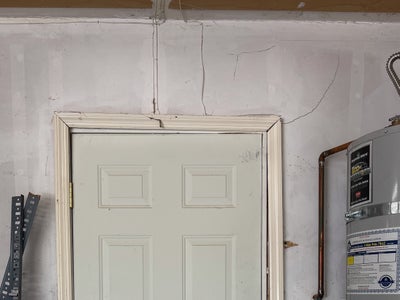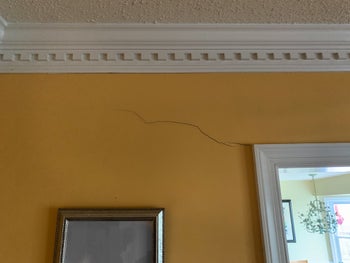What Wall Cracks Mean: Structural vs. Non-Structural

Wall cracks can be alarming, but not all of them indicate serious problems. Understanding the difference between structural and non-structural cracks is crucial for homeowners.
This guide outlines the types of wall cracks and what they mean for your home.
Structural Cracks
Structural cracks are more severe and often indicate a problem with the stability of your home. These cracks are caused by foundation settlement, poor construction, and soil movement. Here are a few characteristics of structural cracks:

- Location: Structural cracks often appear in places with significant load-bearing stress, such as the corners of doors and windows or along the foundation walls.
- Appearance: These cracks are typically wider than 1/8 inch and may be horizontal, vertical, or stair-step in pattern. Structural cracks may extend through multiple levels of the home.
- Movement: If a crack changes in width, length, or direction, it is likely structural.
Structural cracks require immediate attention. Left unaddressed, they can lead to severe issues like foundation failure, water infiltration, and even potential collapse in extreme cases. It’s essential to consult a foundation repair specialist to assess and fix these cracks properly.
Non-Structural Cracks
Non-structural cracks are typically less severe and do not affect the home’s integrity. They are usually caused by minor settling, thermal expansion, or shrinkage of building materials.
Don’t ignore non-structural cracks, as they can worsen over time. Here’s how to identify non-structural cracks:

- Location: These cracks often appear in plaster or drywall and are common in ceilings and non-load-bearing walls.
- Appearance: Non-structural cracks are usually thinner, less than 1/8 inch wide, and can be vertical or horizontal. They often occur in a straight line.
- Stability: Non-structural cracks typically remain the same size over time and don’t show signs of significant movement.
Although non-structural cracks do not always pose an immediate threat, they can cause foundation water damage, potentially leading to mold growth or other issues. Repairing these cracks is a good idea to maintain the appearance and health of your home.
How to Fix Cracks
Repairing wall cracks depends on whether they are structural or non-structural. Here’s a guide on how to address both types:
Fixing Structural Cracks

- Consult a Professional: Begin by consulting a foundation repair expert to assess the extent of the damage.
- Foundation Repair: Depending on the severity, the repair might involve underpinning with foundation piers (helical, push, or slab) to stabilize the foundation.
- Wall Repair: If you have a basement, you may need to use wall repair options like carbon fiber reinforcement, steel I-beams, or wall anchors to straighten the wall and fix cracks.
Fixing Non-Structural Cracks
- Clean the Crack: Use a wire brush to remove any loose material from the crack.
- Apply Filler: Use a high-quality crack filler or patching compound. For small cracks, you can use spackling paste or joint compound. For larger cracks, use a masonry crack filler.
- Sand and Paint: Once the filler is dry, sand the area smooth and repaint to match the surrounding wall.
By taking these steps, you can effectively address structural and non-structural cracks, ensuring your home remains safe and attractive.
When to Seek Professional Help
It may be challenging to determine whether a crack is structural or non-structural. If you’re unsure, contact a professional. Foundation repair experts provide thorough inspections and recommend the appropriate course of action.
Work With Groundworks to Fix Cracks in Your Home

Understanding the difference between structural and non-structural cracks can help you determine the right course of action for your home. While non-structural cracks are generally less concerning, structural cracks require prompt attention to prevent further damage.
Addressing these issues early ensures the long-term stability and safety of your home. Contact Groundworks for more information and to schedule a free inspection.
FAQs
Wall cracks in new homes are often due to the natural settling process as the house adjusts to its foundation. Other factors include temperature changes and the curing of construction materials.
Horizontal cracks are generally more serious as they often indicate foundation movement or pressure against the walls. Vertical cracks are usually less severe and often result from normal settling. Still, both should be inspected by a professional to be sure.
Structural cracks can compromise the safety of your home, so it’s important to have them inspected and fixed by a professional as soon as possible. Depending on the severity, repairs may be necessary to ensure the house stays safe.


